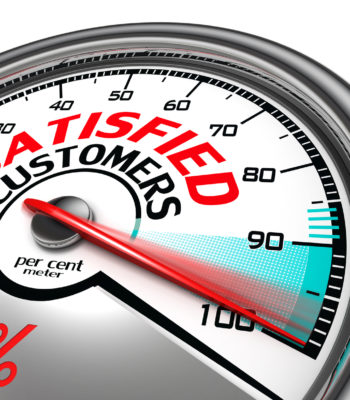
Why Aftermarket Services Shouldn’t Be an Afterthought
In the business-to-business world, there are many different models for providing post-sales support known as aftermarket services to end customers. There isn’t a one-size-fits-all answer, the models deployed to provide the aftermarket solution vary depending on industry and the customer chain ecosystem. In some cases, the aftermarket service is not being provided directly by the manufacturer of the original parts or equipment and that makes it trickier to ensure the end customer is supported correctly. Suppliers who fail to correctly address aftermarket services will ultimately fall short in meeting important end customers’ needs, and as a result lose additional or future sales due to dissatisfied customers.
We have observed several common scenarios in our work with business-to-business suppliers where aftermarket services reverts into becoming an afterthought, with significant consequences. This post will highlight these scenarios, how they impact the customers’ experience, and finally how to address them.
“Something is wrong with my product, and I don’t know who to go to for help.”
In this example, it is not clear to the customer if the supplier, a channel partner, or another third party provides aftermarket services. When this happens, customer expectations are difficult to meet. The repercussions to the supplier often include a decrease in repeat customers, decrease in parts sales, and a diminished brand reputation in the marketplace. For example, a manufacturer of pneumatic nail guns encountered this problem when it sold through a big box retailer that was more focused on making money on the volume sales of the consumables (the nails), not the guns themselves. Unlike the traditional dealers who provided gun repairs or loans, the retailer only offered to return these defective guns to the manufacturer in a time-consuming and inefficient process. The supplier and channel partner did not have a thorough aftermarket services strategy, and the impact to the manufacturer was a loss in repeat business from professional carpenter customers who were challenged to meet tight construction deadlines and undeniably needed efficient, workable tools.
“The level of service I need isn’t there, and I want a better alternative.”
Here, the customer is frustrated with the quality of service they are receiving and demands that someone else provide better alternatives to support the purchased product. We often see this when the supplier is aware of this need and has identified the optimal service provider, but fails to motivate or incentivize the service provider. Just as before, this will have consequences to reputation, revenue and repeat business because the customer will often switch to a competitor that offers better post-sale support. Landscapers purchasing lawn care equipment ran into this problem. They had service options, but not at the off-hours they demanded in the height of summer. The equipment supplier didn’t offer service directly, but instead the engine supplier became creative and put together a network of dealers that could meet the landscapers’ needs during extended, off-hours and provide quick turnaround on servicing the lawn mower engines. They incentivized the dealers through a service fee and allowing them a mark-up on repair parts.
“I want to try out this new product, but don’t want to give up my local trusted service provider.”
As many suppliers have experienced, the local relationships with service providers can on occasion become the most important purchase consideration. Imagine entering a new market with a combined product and service offering, only to find the third party service market is already saturated and difficult to disrupt. A manufacturer of battery systems wanted to enter a new market vertical, but to reach the facility management end customer they needed to work through well-established third party service providers. They had to dismantle their full package, and enable the third party to provide service to the facility management company except in the most challenging situations. As a result, the supplier had to work through an intermediary, was unable to create a direct relationship with the end customer, and struggled to sell the value of the product at its premium price.
Recommendations
Each of these scenarios highlights the need for the supplier to fully understand how their customers receive aftermarket services, or at least how they should receive service in accordance to customer needs. To ensure that your customers are receiving the right aftermarket services, we recommend the following approach:
- Research the current state of the market and identify the major aftermarket services providers who are sought out by end customers, including the incumbent’s service offering, as well as third parties
- Map out the top providers’ capabilities and assess how they overlap with your capabilities along the following dimensions:
- Availability of local, on-the-ground service technicians for routine maintenance
- Access to everyday, quick simple service knowledge (e.g. troubleshooting, quick fixes)
- Comprehensive technical knowledge for rare, challenging cases
- Communication capabilities (e.g. support call centers, chat rooms)
- Spare parts and component inventory availability
- Lead time delivery
- Based on the overlap and gaps in this assessment, decide to:
- Augment your own service network, OR
- Exclusively partner with an existing service provider, OR
- Align with an array of existing service providers
- Whether you partner with external service providers or develop your own network, creating a plan with programs and incentives to make sure both parties have the same goals is critical to success
In the long run, ignoring aftermarket services or treating it as an afterthought risks the success of the supplier’s future business. By thoughtfully and thoroughly addressing this customer need—either through internal or external resources—suppliers can gain satisfied, repeat customers who will bolster future revenue.



